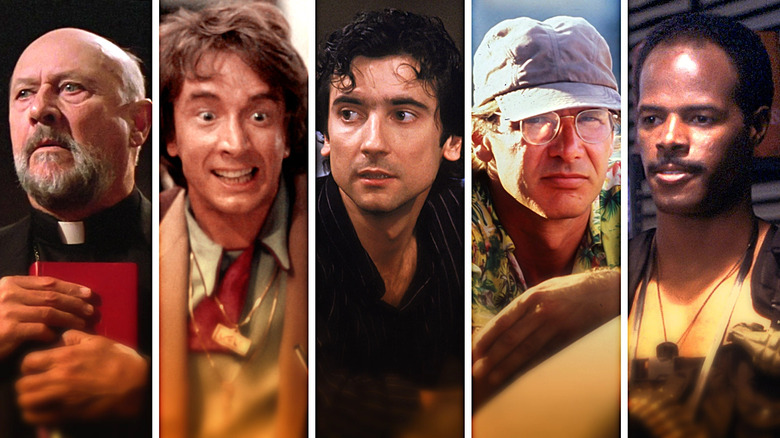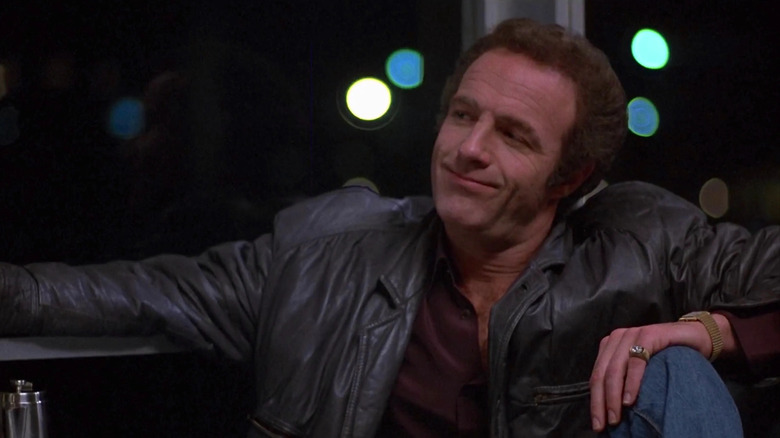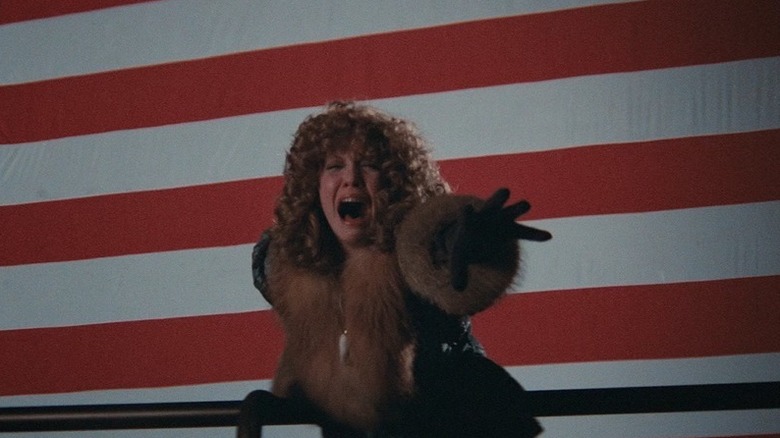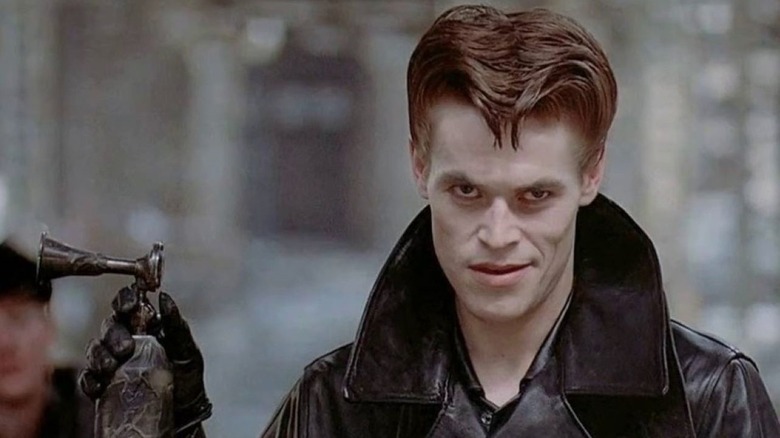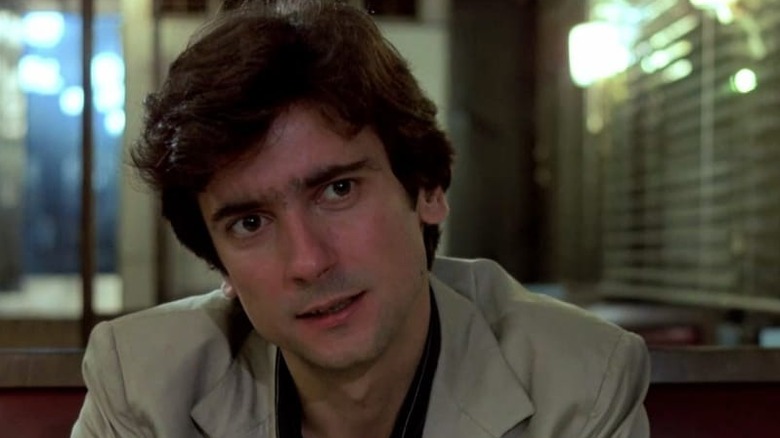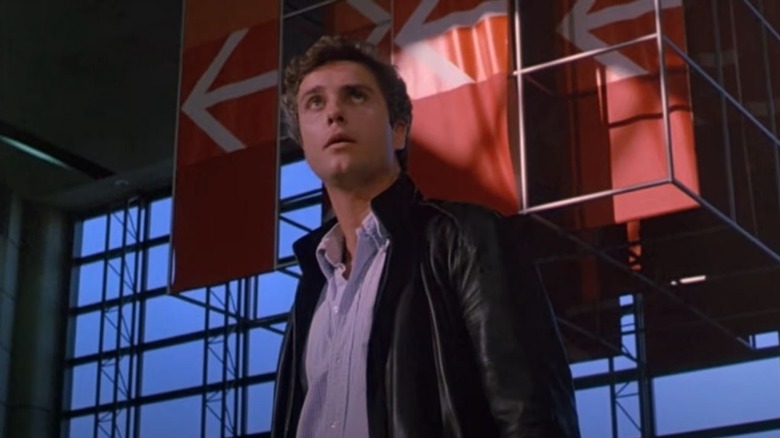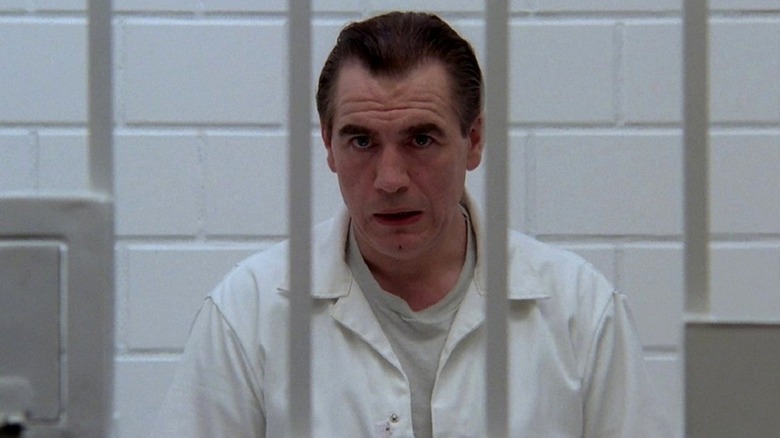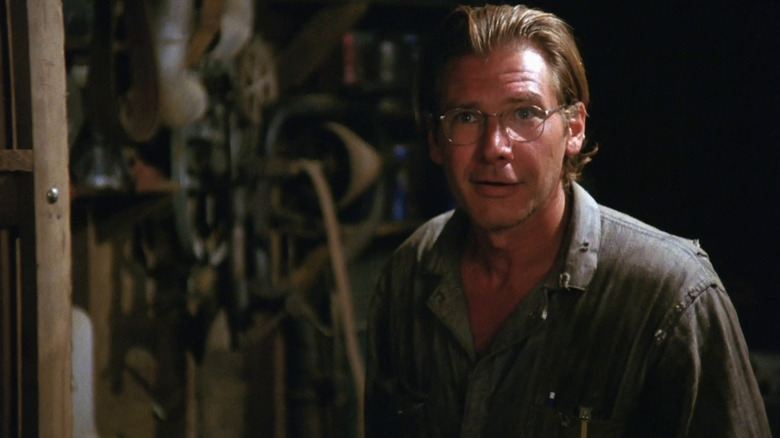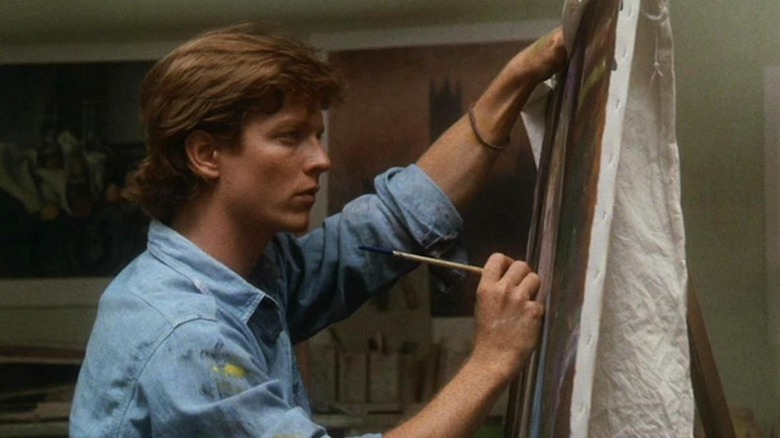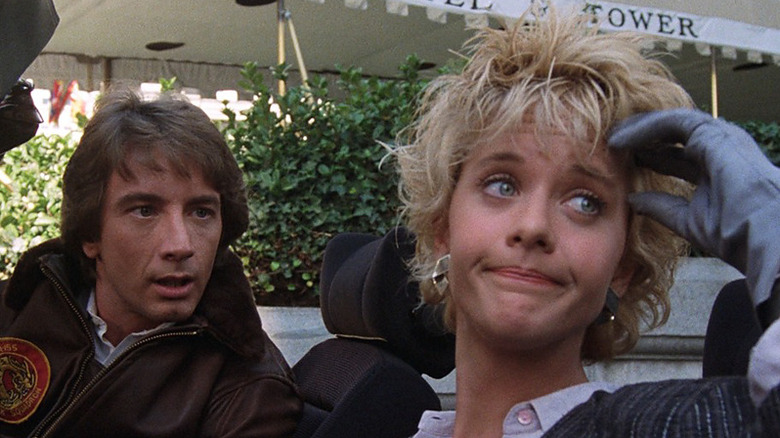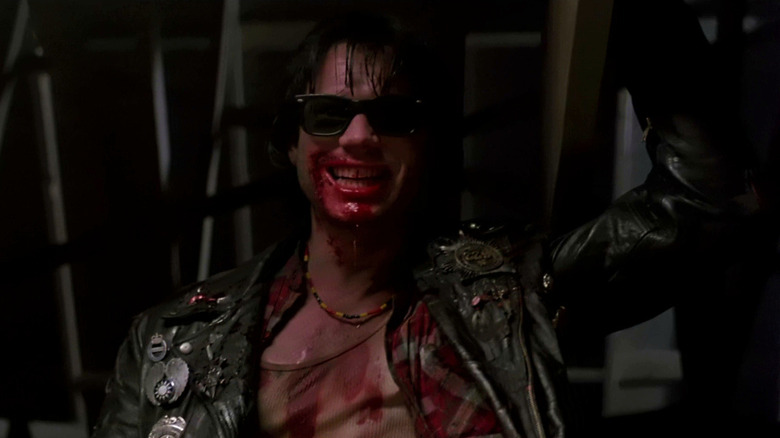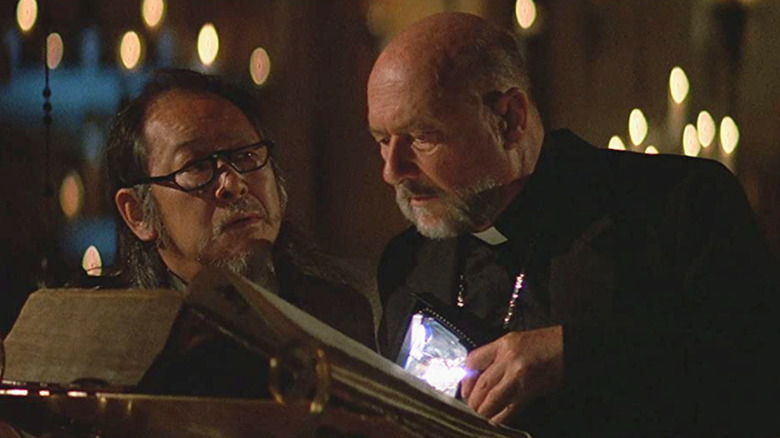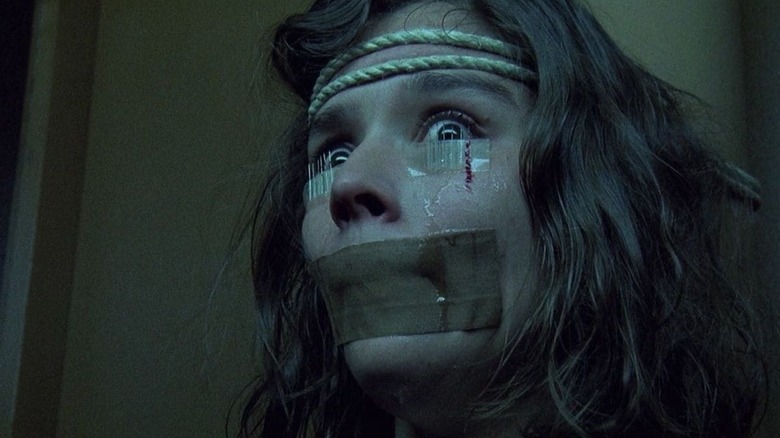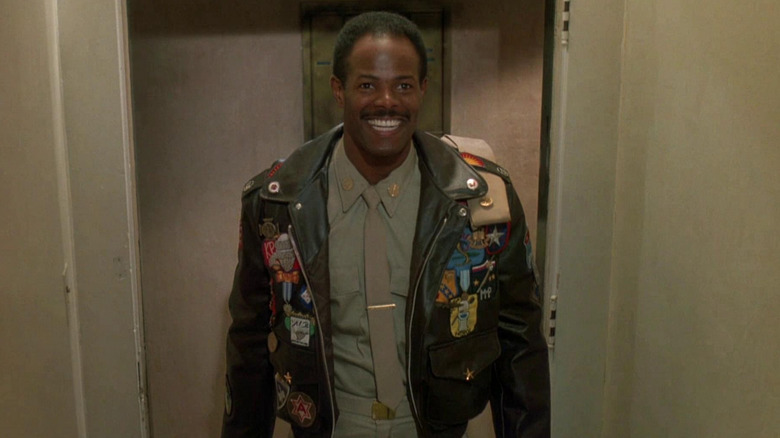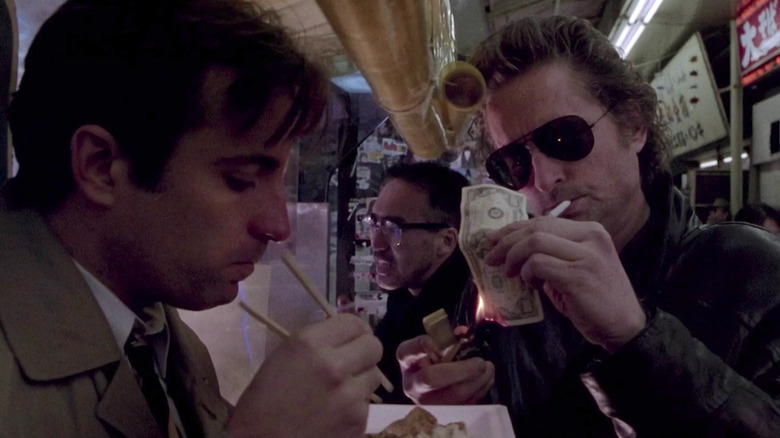The 15 Most Underrated Movies Of The 1980s
The '80s were full of some of the most beloved movies of a generation, including everything from franchise blockbusters to one-off masterpieces. But for every movie throughout the decade that regularly gets widely celebrated, there are countless others of solid quality yet often outside of the spotlight. This can be from the movies not being commercial successes upon their initial release or just being overshadowed by more popular genre contemporaries. Whatever the reason for their oversight, these films are well-crafted and, above all, make for an entertaining time at the movies.
Fortunately, the test of time has proven kind to many movies that were initially overlooked, with many of them finding their adoring audiences years later. Whether they're cult classics or movies that just never quite hit the level of attention they deserved, these flicks are cinematic diamonds in the rough.
Here are the 15 most underrated movies of the 1980s, well worth a viewing and deserving of some more love.
Thief
Before helping helm "Miami Vice" or directing some of the best crime movies of the '90s, filmmaker Michael Mann's feature directorial debut was 1981's "Thief." True to its title, the movie focuses on professional jewel thief Frank (James Caan), who is looking for one last major score before retiring. Frank agrees to one last heist on a major diamond shipment in Los Angeles, but is double-crossed by mob boss Leo (Robert Prosky). Pushed to his limits and with his family threatened, Frank decides to take the fight to Leo for a last-ditch effort at his own freedom.
Even right out the gate, Mann brings a striking stylish flair to "Thief," presaging a filmmaking confidence that would come to define his work. Caan brings the even-keeled performance of a seasoned pro to his role as Frank in a movie he would regard among his favorites that he made. Working with a more limited production budget than his later projects, Mann finds ways to still make his movie effectively, giving it an understatement that befits its unflappable protagonist. A sleek and spartan neo-noir that still finds room to deliver its story in style, "Thief" set the tone for Mann's work to come.
Blow Out
After working together on 1976's "Carrie," filmmaker Brian De Palma reunited with John Travolta five years later for the suspense thriller "Blow Out." Travolta stars as Jack Terry, a movie sound effects technician looking to record a realistic sounding scream for his latest project. While recording ambient noise around Philadelphia, Terry incidentally finds evidence that the accidental death of a presidential candidate was actually an assassination. This leads to Terry stumbling across a larger conspiracy surrounding the murder, with Terri stalked by the killer (John Lithgow).
"Blow Out" takes De Palma's recurring themes of voyeurism, but he frames through sound rather than sight, making it an informal companion piece to Francis Ford Coppola's "The Conversation." In contrast to Coppola's film, De Palma incorporates more conventional thriller elements, including an especially chilling performance from Lithgow. De Palma has consistently taken filmmaking cues from master of suspense Alfred Hitchcock, and those influences are on full display here. Arguably the most under-appreciated movie by De Palma, "Blow Out" is a tension-filled ride.
Streets of Fire
Filmmaker Walter Hill had provided a memorable twist on street gangs with the hit '70s movie "The Warriors" and looked to blend genres with his 1984 film "Streets of Fire." Set in a dystopian city that still featured distinct '50s aesthetics, the movie mixed hard-hitting action with neo-noir tones and rocking musical numbers. After rock 'n' roll star Ellen Aim (Diane Lane) is kidnapped by a notorious biker gang, her ex-boyfriend Tom Cody (Michael Paré) and his friends mount a rescue mission. This involves Cody's group having to travel to the bikers' lair and back, eluding the police and the vengeful gang leader, Raven Shaddock (Willem Dafoe), along the way.
"Streets of Fire" tries a lot at once and fortunately most of its big swings connect, even as its pacing is all over the place. Lane and Dafoe steal the show in their respective roles, foreshadowing greater career success for each of them to come. The action and musical set pieces both have an exuberant energy to them, propelling the movie along just when it risks getting bogged down in its own genre-blend. A cinematic fairy tale, albeit within an urban sprawl populated by menacing greasers instead of high fantasy, "Streets of Fire" is just a lot of fun.
After Hours
Of all the genres that filmmaker Martin Scorsese has worked in, he's not often associated with his work in comedy. Scorsese's biggest foray into outright humor is directing the 1985 dark comedy "After Hours," revolving around a screwball tour of Manhattan. The movie follows unassuming office worker Paul Hackett (Griffin Dunne), who travels to SoHo on a spur-of-the-moment date. Ending the date abruptly, Paul finds himself linked to two burglars that have been prowling the neighborhood recently as he tries to find a way home.
While Scorsese has certainly included humorous elements into his subsequent work, he hasn't worked so overtly within comedy ever again (his cameo in "The Studio" notwithstanding). That distinction is a shame, because Scorsese does good work within the genre, imbuing scenes with a zany energy while keeping the satire sharp. There's a sense of urgency that pushes "After Hours" along, bringing the audience along for one wild night in SoHo. Though not as well-regarded as the majority of Scorsese's other work, "After Hours" certainly deserves its flowers too.
To Live and Die in L.A.
After helming multiple crime movies in New York, filmmaker William Friedkin pivoted to the City of Angels for 1985's "To Live and Die in L.A." The movie follows Secret Service agent Richard Chance (William Petersen), who swears revenge on counterfeiter Rick Masters (Willem Dafoe) after his partner is murdered. Chance resorts to increasingly unethical tactics as he pursues Masters and his associates, unnerving his new partner John Vukovich (John Pankow). This eventually places the two agents on the wrong side of an FBI sting operation, even as they hunt Masters with an obsessively single-minded focus.
While not as universally acclaimed as his previous crime movie, "The French Connection," Friedkin is back in his element with "To Live and Die in L.A." From its original score provided by the band Wang Chung to a standout villainous performance from Dafoe, the movie just delivers on memorable atmosphere. And lest any doubters think Friedkin had passed his prime, the film also contains one of the greatest car chases ever put on the silver screen. The last bonafide masterpiece from Friedkin, "To Live and Die in L.A." is a morally complex tale of the consequences of revenge.
Manhunter
Hardcore fans of the character are probably aware of this, but Anthony Hopkins was not the first actor to play the notorious Hannibal Lecter on-screen. That distinction goes to Brian Cox in 1986's "Manhunter," written and directed by Michael Mann, though the character's last name was changed to "Lecktor." The first adaptation of Thomas Harris' 1981 novel "Red Dragon," the movie has FBI profiler Will Graham (William Petersen) emerge from retirement to track down a vicious serial killer. As Graham pursues the murderer, known as the Tooth Fairy (Tom Noonan), he realizes his target has been corresponding with the incarcerated Lecktor.
Viewers who are more familiar with Hopkins' iconic portrayal of Lecter and the 2002 adaptation of "Red Dragon" may be thrown for a loop with this iteration of the story. Cox's performance as the classic cannibal is more understated and less sophisticated than Hopkins' take, clearly menacing in his own way. There is also a distinct sense of style in "Manhunter" from later adaptations of Harris' work, primarily in regard to its cinematography. An interesting outlier in the wider Hannibal Lecter franchise, "Manhunter" is definitely worth checking out.
The Mosquito Coast
After starring in the original "Star Wars" trilogy and the first two Indiana Jones movies, Harrison Ford turned to more dramatic fare for much of the '80s. Among the more overlooked projects from Ford in this period was 1986's "The Mosquito Coast," adapting Paul Theroux's 1981 novel of the same name. Ford stars as disillusioned inventor Allie Fox, who relocates with his family to a village deep in the Latin American rainforest largely undisturbed by the outside world. Fox's attempts to build a utopia are derailed when he clashes with visiting missionary Reverend Spellgood (Andre Gregory), with the innocent community caught between their dueling egos.
"The Mosquito Coast" gives audiences the chance to see Harrison Ford as they've never seen him before and markedly the better for it. Not a self-assured action hero, Ford's performance as Fox is complex and runs the gamut of emotional morays as his delusions of grandeur come crashing down. The social commentary and themes are delivered without any sense of subtlety but, in its defense, subtlety was never a storytelling objective. One of Ford's best roles and one he continues to regard highly, "The Mosquito Coast" shows the full range of his acting talents.
Some Kind of Wonderful
Filmmaker John Hughes dominated coming-of-age romantic movies throughout the '80s, though he only directed a handful of his screenplays himself. One of his more underrated projects was 1987's "Some Kind of Wonderful," directed by Howard Deutch, with Hughes writing and producing the film. The movie enters on the romantic dynamics between four teenagers in the San Fernando Valley after blue-collar student Keith Nelson (Eric Stoltz) begins dating popular girl Amanda Jones (Lea Thompson). This attracts the ire of Amanda's ex-boyfriend Hardy Jenns (Craig Sheffer) while Keith's best friend Watts (Mary Stuart Masterson) realizes her true feelings for Keith.
There is a greater sense of maturity to "Some Kind of Wonderful" compared to other Hughes' movies of the era, most notably "Pretty in Pink," which covers similar subject matter. Deutch directs characters that feel more grounded than postmodern fairy tales Hughes often crafted, adding to their relatability. Even with that heightened verisimilitude, the movie retains all the usual hallmarks of a Hughes project, including a solid contemporary soundtrack. A little rougher around the edges than its immediate counterparts, that realism really benefits and elevates "Some Kind of Wonderful" considerably.
Innerspace
When it comes to quirky blockbusters, there were few directors in the '80s who hit their stride more prominently than Joe Dante. Dante's most ambitious directorial effort was the 1987 science fiction comedy "Innerspace," starring Dennis Quaid, Martin Short, and Meg Ryan. Quaid plays pilot Tuck Pendleton, who participates in an experimental miniaturization project that shrinks him and his vessel to microscopic size. When the project is derailed by a rival organization, Pendleton is injected into the body of supermarket clerk Jack Putter (Short) to avoid having the technology fall into wrong hands.
A riff on sci-fi flicks like 1966's "Fantastic Voyage," "Innerspace" disappointed at the box office but found its audience over the subsequent years on home video. With the movie's wacky premise, Short is a natural at doing much of the humorous heavy lifting as Jack is forced to step up as the story's action hero. Initially intended to be a sci-fi thriller, the concept was wisely flipped to be a comedy, suiting its cast's strengths. A send-up of spy movies and sci-fi action, "Innerspace" highlights all the lovingly offbeat qualities of a Dante film.
Near Dark
Before repositioning Keanu Reeves as an action star with 1991's "Point Break," filmmaker Kathryn Bigelow crafted a postmodern vampire movie with 1987's "Near Dark." A neo-Western, the movie has protagonist Caleb Colton (Adrian Pasdar) transformed into a vampire by the enigmatic Mae (Jenny Wright). Caleb is brought into Mae's wandering coven of vampires, who prowl the American Southwest for fresh blood, though is distrusted by its leaders. When Caleb's family is targeted by the vampires after they come looking for him, he steps up to protect them from the undead bloodsuckers.
Bigelow is unapologetically blending genres throughout "Near Dark," not just with Westerns and supernatural horror, but also with biker movie tropes and coming-of-age drama. At its emotional core, the movie is a family feud between Caleb's family and the coven, testing loyalties as the two clans collide. It's also a movie that has plenty of smoldering style to spare, taking advantage of its setting and Western overtones. A more mature take on vampires compared to its contemporaries like "The Lost Boys" and "Fright Night," "Near Dark" deserves to be just as acclaimed as them.
Prince of Darkness
Filmmaker John Carpenter had redefined the slasher sub-genre in the '70s before taking on more varied projects in the following decade. For his 1987 horror movie "Prince of Darkness," Carpenter had science and the supernatural collide as quantum physicist Howard Birack (Victor Wong) investigates a mysterious container of ancient green liquid. Birack's team of scientists is joined by an unnamed Catholic priest (Donald Pleasence) as the monastery where the investigation is held is surrounded by its violent thralls. Trapped inside, the group discovers the liquid's true hellish nature and its connection to the Anti-God, the ultimate evil trying to conquer the world.
"Prince of Darkness" is Carpenter, who also wrote the movie's screenplay under a pseudonym, at his most existential and high-conceptual. Linking the classic battle between biblical good and evil with matter and antimatter gives the story a fresh twist, while it remembers to still bring the scares. While largely confined to a singular location, Carpenter still ratchets up the tension without having to go big despite the stakes and premise. The middle installment of Carpenter's apocalypse trilogy, "Prince of Darkness" makes for an otherworldly good time.
Opera (1987)
Italian filmmaker Dario Argento had popularized the giallo horror sub-genre beyond Europe with his gruesome hits like 1977's "Suspiria." Argento continued making giallo movies well into the '80s, with varying levels of success compared to his earlier work. Among his more overlooked work in the United States from this period is 1987's "Opera," which features a masked serial killer prowling around an opera house. The mysterious murderer takes an especially unhealthy interest in Betty (Cristina Marsillach), with it gradually becoming clear that the killer is connected to Betty's traumatic past.
"Opera" is as graphically vicious as any other Argento movie, with the killer often forcing the protagonist to watch his brutal murders. That self-aware sense of violent voyeurism sets the movie apart from a lot of its sadistic counterparts, adding a level of complicity. On a broader level, "Opera" is Argento's last great movie before the horror master tapered off his output in the '90s. Clearly not for the faint of heart, "Opera" is a must-watch flick for fans of the giallo genre.
I'm Gonna Git You Sucka
A couple years before helping revolutionize television with "In Living Color," filmmaker Keenen Ivory Wayans lovingly parodied blaxploitation movies with 1988's "I'm Gonna Git You Sucka." In addition to writing and directing the film, Wayans stars as Jack Spade, a soldier who returns home to the ghetto after his brother overdoses on gold chains. Learning local crime lord Mr. Big (John Vernon) is responsible, Spade vows to take him down, forming a team with his mentor John Slade (Bernie Casey). This plan immediately and disastrously goes awry, leaving Spade to handle Mr. Big and his outfit by himself.
Wayans' directorial debut, "I'm Gonna Git You Sucka" skewers the macho blaxploitation archetype as thoroughly as "Police Squad" spoofs '70s crime shows. Working with a limited production budget, Wayans and the rest of the creative team craft a sharp satire that transcends its targeted genre. Buoying the movie is an impressive ensemble cast around Wayans including Isaac Hayes and Jim Brown. A sign of greater things to come from Wayans and his family, "I'm Gonna Git You Sucka" celebrates a bygone genre as it appreciatively makes fun of it.
UHF
By the '80s, recording artist "Weird Al" Yankovic's career in making hit pop music parodies was really taking off, fueled by funny music videos skewering their contemporaries. In 1989, Yankovic starred in his first feature-length movie, "UHF," which he also co-wrote with director Jay Levey. Yankovic plays George Newman, a chronic daydreamer who finds himself running a local UHF television station that's struggling to make ends meet. As Newman tries to come up with ways to drive up viewership, the station's janitor Stanley Spadowski (Michael Richards) accidentally becomes a hit television personality.
Though performing well with early test screenings, "UHF" was seen as a devastating failure upon its wide theatrical release. This is a shame, because "UHF" distills what's so appealing about Yankovic's charm and sense of humor, while expanding his parodies to its cinematic counterparts. The movie also gives Richards and Fran Drescher plenty of time to shine before they would each find greater sitcom success afterwards. A cult classic that has only improved with age, "UHF" is an '80s comedy that's fun for the whole family.
Black Rain
Not to be confused with the Japanese movie of the same name also released in 1989, the American "Black Rain" was a neo-noir spanning New York City and Osaka. The movie involves New York police detectives Nick Conklin (Michael Douglas) and Charlie Vincent (Andy Garcia) apprehending and escorting yakuza enforcer Koji Sato (Yūsaku Matsuda) back to Japan. Once in Osaka, Sato escapes custody, prompting Conklin and Vincent to pursue him deep into the city's criminal underworld. This leads to them uncovering a massive counterfeiting scheme involving American currency as they try to bring Sato back into police custody.
After several career setbacks, "Black Rain" was director Ridley Scott's return to form, using the Osaka backdrop well for his neo-noir movie. This is furthered by the stellar cinematography and set design throughout the film, really creating an evocative mood that carries the viewing experience. Douglas and Garcia are in fine form as always, with Douglas really leaning into the moral ambiguity surrounding his character. An overlooked gem in Scott's wider filmography, "Black Rain" is gripping crime movie with plenty of style to burn.
